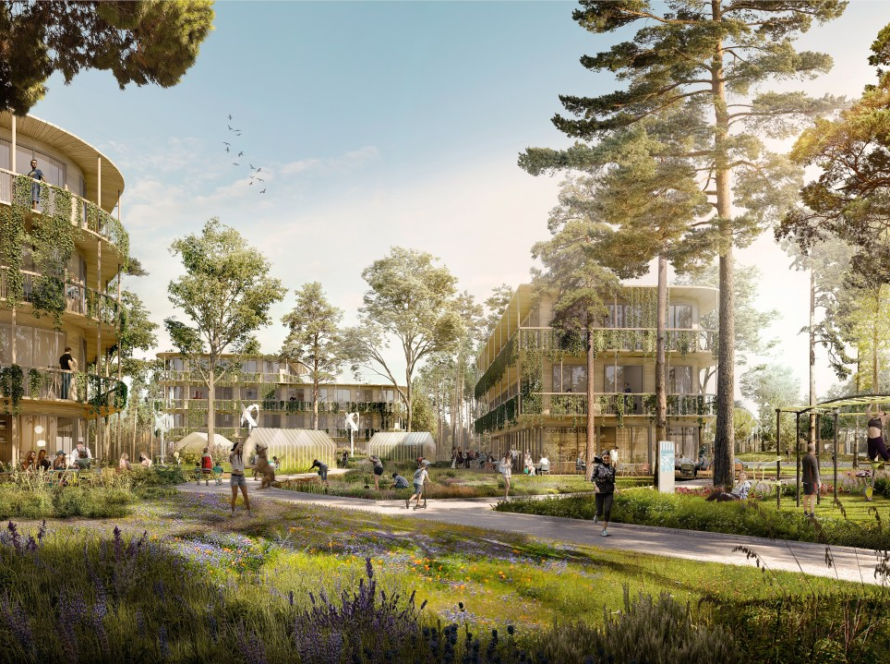
Table of Contents
- Introduction to HVAC Installation
- Assessing Your Needs
- Choosing the Right System
- Preparing Your Home
- Installation Day: What to Expect
- Electrical and Control Systems Integration
- System Testing and Calibration
- Educating the Homeowner
- Addressing Common Concerns
- Post-Installation Follow-Up
- Conclusion
Introduction to HVAC Installation
Installing a new HVAC (Heating, Ventilation, and Air Conditioning) system is a significant investment that can greatly improve your home’s comfort and energy efficiency. Understanding what to expect during the process can help alleviate any concerns and ensure a smooth installation. This blog post will guide you through each step, providing insights into the preparations, the installation itself, and post-installation considerations.
Assessing Your Needs
Before the installation begins, it’s crucial to assess your specific needs. A professional HVAC contractor will conduct a thorough evaluation of your home, considering factors such as square footage, insulation quality, window types, and existing ductwork. This assessment helps determine the right size and type of HVAC system for your home, ensuring optimal performance and energy efficiency.
During this phase, you’ll also discuss your preferences and any specific requirements you might have. For instance, you may want a system that offers advanced air filtration, zoning capabilities, or smart home integration. Clear communication with your contractor at this stage sets the foundation for a successful installation.
Choosing the Right System
With a clear understanding of your needs, the next step is selecting the appropriate HVAC system. There are various options available, including central air conditioners, heat pumps, and ductless mini-split systems. Each type has its advantages and is suited to different situations.
Your contractor will help you weigh the pros and cons of each system, considering factors such as initial cost, energy efficiency, maintenance requirements, and potential lifespan. This collaborative process ensures that you choose a system that meets your budget and performance expectations.
Preparing Your Home
Once you’ve selected your new HVAC system, preparing your home for installation is essential. This phase involves several steps to ensure a smooth and efficient process. First, the contractor will outline the installation timeline and any necessary preparations, such as clearing space around the installation area and ensuring easy access to electrical panels and ductwork.
Additionally, you may need to temporarily adjust your daily routine, as the installation process can be noisy and disruptive. Understanding these preparations in advance allows you to make any necessary accommodations, minimizing inconvenience during the installation period.
Installation Day: What to Expect
On the day of installation, the contractor and their team will arrive at your home with all the necessary equipment and materials. The process typically begins with removing the old HVAC system, if applicable. This step involves safely disconnecting and disposing of the existing unit, which can take several hours depending on the complexity.
Next, the team will install the new system. This involves placing the indoor and outdoor units, connecting the refrigerant lines, and integrating the system with your home’s existing ductwork or installing new ducts if required. The technicians will also ensure that the system is properly sealed and insulated to prevent energy loss and maximize efficiency.
Electrical and Control Systems Integration
An essential part of HVAC installation is integrating the new system with your home’s electrical and control systems. This step ensures that the HVAC unit operates safely and efficiently. The contractor will connect the system to your home’s electrical panel and install any necessary control devices, such as thermostats or smart home interfaces.
During this phase, the technicians will also conduct thorough testing to ensure that all components are functioning correctly. They will check for any electrical issues, verify the proper operation of the control systems, and ensure that the HVAC unit is delivering the desired airflow and temperature control.


System Testing and Calibration
After the installation is complete, the next crucial step is system testing and calibration. The contractor will perform a series of tests to ensure that the HVAC system is operating at peak efficiency. This includes checking the refrigerant levels, verifying the airflow, and ensuring that the system is cycling on and off correctly.
Calibration involves fine-tuning the system to match your specific comfort preferences. The technician will adjust the thermostat settings, test the zoning features if applicable, and make any necessary adjustments to ensure optimal performance. This step ensures that your new HVAC system provides consistent comfort while operating efficiently.
Educating the Homeowner
A professional HVAC contractor understands the importance of educating homeowners about their new system. After installation and calibration, the contractor will take the time to explain how to operate and maintain your HVAC unit. This includes demonstrating how to use the thermostat, explaining any smart home features, and providing tips for energy-efficient operation.
Additionally, the contractor will provide guidance on regular maintenance tasks, such as changing air filters, cleaning ducts, and scheduling annual inspections. Understanding these aspects helps you maximize the lifespan of your HVAC system and maintain its efficiency.
Addressing Common Concerns
Throughout the installation process, you may have questions or concerns. A reputable HVAC contractor will address these promptly and professionally. Common concerns might include the noise level of the new system, the expected impact on your energy bills, or the warranty coverage for the unit and its components.
By maintaining open communication with your contractor, you can address any uncertainties and ensure that you are fully satisfied with the installation process. This collaborative approach fosters trust and ensures that your new HVAC system meets your expectations.
Post-Installation Follow-Up
A thorough HVAC installation process doesn’t end once the system is up and running. A professional contractor will schedule a follow-up visit to ensure that everything is working correctly and to address any issues that may arise. This visit typically occurs a few weeks after installation, allowing the system to settle in and for you to identify any potential concerns.
During the follow-up, the technician will conduct a final inspection, answer any additional questions you might have, and provide further maintenance tips. This step is crucial for ensuring long-term satisfaction and performance from your new HVAC system.
Conclusion
Installing a new HVAC system is a complex but rewarding process. By understanding what to expect at each stage, you can navigate the installation with confidence and ensure that your home remains comfortable and energy-efficient. From assessing your needs and choosing the right system to the final follow-up, each step plays a vital role in achieving a successful installation. With the guidance of a professional HVAC contractor, you can look forward to years of reliable comfort and efficiency in your home.


